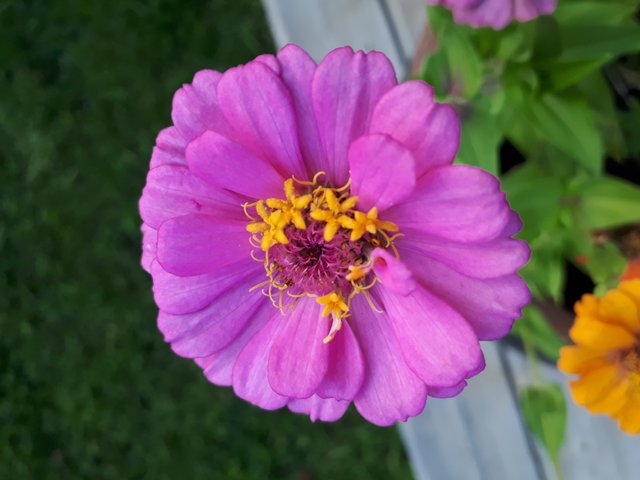How to Attract Butterflies
Let's start with a look at the butterfly.
Adult butterflies and moths have mouthparts that are shaped into a long, coiled tube. Butterflies feed on liquids (nectar) and they get all their food through this tube.
Their offspring or larvae, on the other hand, have chewing mouthparts, which they use to devour leaves.
The eyes of the butterfly are large, rounded compound eyes. This allows them to see in all directions without turning their heads. Butterflies are nearsighted, like most insects, and are more attracted to large stands of a particular flower than those planted singly.
.jpg)
Butterflies do not see the colour red as well as we do, however, they are able to see polarized light (which tells the direction the sun is pointing) as well as ultraviolet light, which is present on many flowers. This helps guide them to nectar sources.
Butterflies use their antennae to smell and their sense of smell is well developed. All butterflies' antennae are club-shaped, as opposed to moths, which can be many shapes but often are feathery.
Nectar Preferences (food)
Different species of butterflies have different preferences of nectar, in both colours and tastes. If you want to encourage different butterflies to visit your yard then your best bet is to supply them with a wide range of nectar source or plants.
Diversity is the key word here, ecosystems thrive on biodiversity. This is an opportunity to explore and have some fun and a chance to engage your imagination.
Consider a circular garden bed that is just off of centre in your front or back yard. You can use twine or even a garden hose to lay out the circle. It does not have to be a perfect circle. A diameter of 4 to 5 feet is sufficient to add beauty and function to the yard.
If you combine wild and cultivated plants and use plants with different blooming times of the day and year you will encourage a wider range of butterflies to stop by.
When you plant your flowers in groups of the same plants this will make it easier for butterflies to see the flowers than singly planted flowers would.
Housing:
If you want the butterflies to stay in your garden and raise a family then you need to provide them with food plants where the females can lay their eggs. Some females are pickier about which host to lay their eggs on than others.
The butterfly larvae are also distinctive. Some caterpillars have hairs or forked spines, which may be or may not sting (often the hairs are just for show).
Certain swallowtail caterpillars imitate snakes or bird droppings. Other caterpillars, like sulphers, blend into their surroundings very well.
If caterpillars are eating excessive foliage from a prominent or desirable part of a plant and you want to palce them elsewhere then use gloves to move them if they're hairy to the backside or another less noticeable portion of the plant.
All insects are cold-blooded and cannot internally regulate their body temperature. Butterflies will readily bask in the sun when it is warm out, but few are seen on cloudy days.
It is a good idea to leave open areas in a yard for butterflies to sun themselves, as well as partly shady areas like trees or shrubs, so they can hide when it's cloudy or cool off if it is very hot.
A flat rock placed in full sun will provide the spot that butterflies need to bask. Butterflies like puddles. Males of several species congregate at small rain pools, forming puddle clubs.
Permanent puddles are very easy to make by burying a bucket to the rim, filling it with gravel or sand, and then pouring in liquids such as stale beer, sweet drinks or water. Butterflies love overripe fruit,that has been allowed to sit for a few days.